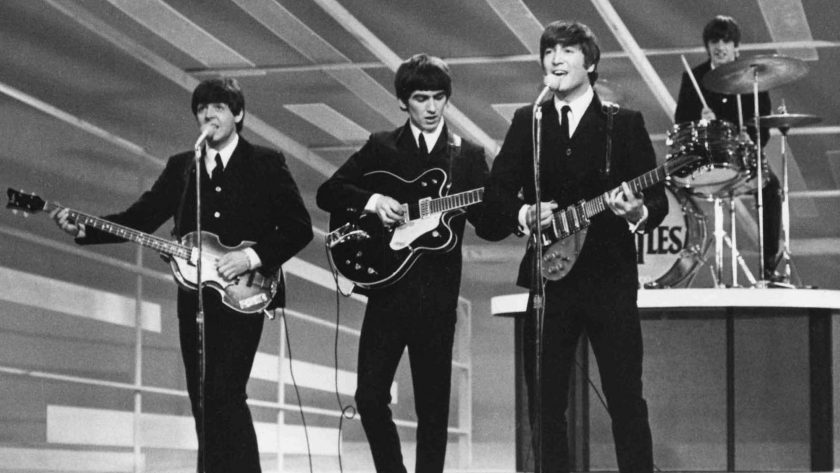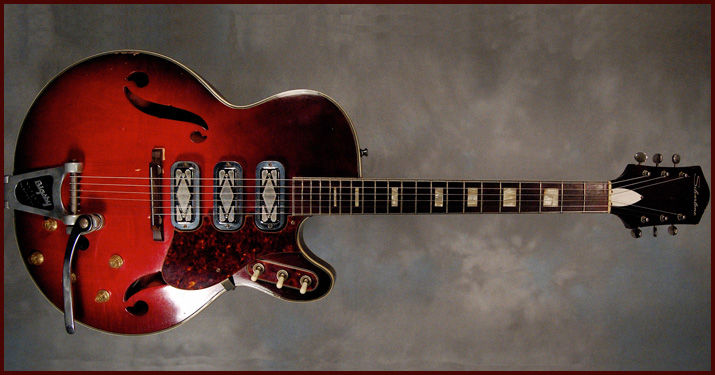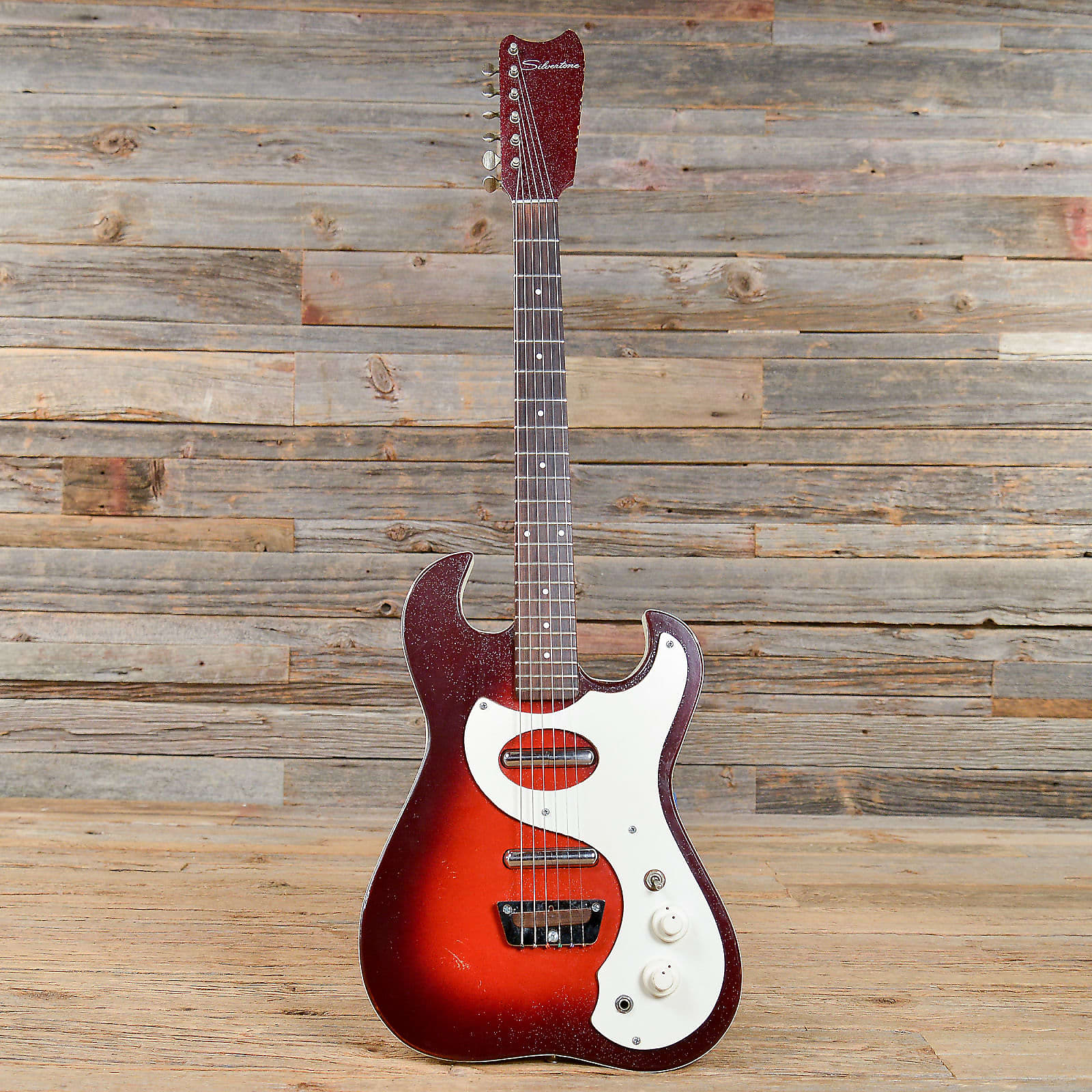The Sears Silvertone Guitar is an iconic instrument that holds a special place in music history. With its unique design and distinctive sound, it has become a beloved instrument for musicians and collectors alike. In this article, we will explore the beginnings of the Sears Silvertone Guitar, its design and features, its impact on music history and popular culture, famous musicians who have used it, its current popularity among collectors and enthusiasts, tips for restoring and maintaining the guitar, and its future in the world of music.
The Beginnings of the Sears Silvertone Guitar: A Brief History
The Sears Silvertone Guitar was first introduced in the early 20th century as a collaboration between Sears, Roebuck and Co. and various guitar manufacturers. Sears saw an opportunity to capitalize on the growing popularity of guitars and decided to create their own line of instruments. They partnered with companies such as Harmony, Kay, and Danelectro to produce guitars under the Silvertone brand.
Early models of the Sears Silvertone Guitar were simple and affordable instruments that were marketed towards beginners and amateur musicians. They featured basic designs with minimal ornamentation, making them accessible to a wide range of customers. These early models were often made with laminated wood bodies and featured single-coil pickups.
The Design and Features of the Sears Silvertone Guitar

The design of the Sears Silvertone Guitar evolved over the years, with each model offering its own unique features. The early models had a simple, no-frills design with a single-cutaway body shape. As time went on, more elaborate designs were introduced, including double-cutaway bodies and different body shapes such as the “amp-in-case” models.
Key features of the Sears Silvertone Guitar include its solid construction, comfortable neck profile, and versatile electronics. The guitars were known for their playability and ease of use, making them popular among both beginners and experienced players. The pickups on the Sears Silvertone Guitar were known for their warm, vintage tone, and they were often paired with simple control layouts that allowed for easy tone shaping.
The Sound of the Sears Silvertone Guitar: What Makes it Unique?
The sound of the Sears Silvertone Guitar is often described as warm, rich, and full-bodied. This is due in part to the combination of its solid construction and the quality of its pickups. The guitars were designed to produce a balanced tone with a strong midrange presence, making them suitable for a wide range of musical styles.
Factors that contribute to the unique tone of the Sears Silvertone Guitar include the type of wood used in its construction, the design of the pickups, and the electronics used in the guitar. The guitars were often made with mahogany or maple bodies, which contributed to their warm and resonant tone. The pickups used in the Sears Silvertone Guitar were typically single-coil or humbucker designs, which added to their versatility and allowed for a wide range of tonal options.
When compared to other guitars of its time, the Sears Silvertone Guitar stood out for its affordability and quality. It offered a high level of craftsmanship and sound quality at a fraction of the price of other guitars on the market.
The Role of the Sears Silvertone Guitar in Music History
The Sears Silvertone Guitar played a significant role in music history, particularly during the mid-20th century. It was one of the first affordable electric guitars available to the general public, which made it accessible to aspiring musicians who may not have been able to afford more expensive instruments.
The guitar’s affordability and versatility made it popular among musicians in various genres. It was used by blues artists such as Muddy Waters and Howlin’ Wolf, country musicians like Hank Williams Sr., and rock ‘n’ roll pioneers like Buddy Holly and Elvis Presley. The Sears Silvertone Guitar became synonymous with the sound of early rock ‘n’ roll and played a crucial role in shaping the genre.
The Impact of the Sears Silvertone Guitar on Popular Culture

The Sears Silvertone Guitar had a significant impact on popular culture, extending beyond its role in music. The guitar was often featured in movies, TV shows, and other forms of media, which helped to solidify its status as an iconic instrument.
In addition to its appearances in media, the Sears Silvertone Guitar also influenced fashion and style. Its sleek design and distinctive look made it a sought-after accessory for musicians and non-musicians alike. The guitar’s popularity helped to shape the image of rock ‘n’ roll and influenced the fashion trends of the time.
Famous Musicians Who Have Used the Sears Silvertone Guitar
The Sears Silvertone Guitar has been used by many famous musicians throughout its history. Some notable examples include:
- Jack White: The White Stripes frontman is known for his use of vintage Sears Silvertone guitars, which he often modifies and customizes to suit his unique playing style. He has used these guitars on many of his recordings and live performances.
- Kurt Cobain: The late Nirvana frontman was known for his use of a Sears Silvertone guitar, which he played on the band’s iconic album “Nevermind.” The guitar’s raw and gritty tone perfectly complemented Cobain’s aggressive playing style.
- Beck: The singer-songwriter has been known to use a vintage Sears Silvertone guitar on many of his recordings. He appreciates the guitar’s unique sound and vintage aesthetic.
These are just a few examples of the many famous musicians who have used the Sears Silvertone Guitar throughout their careers. The guitar’s distinctive sound and affordable price point have made it a popular choice among musicians of all genres.
The Sears Silvertone Guitar Today: Collectors and Enthusiasts
The Sears Silvertone Guitar continues to be popular among collectors and enthusiasts today. Vintage models are highly sought after and can fetch high prices on the market. Collectors appreciate the guitar’s historical significance and unique design, making it a valuable addition to their collections.
Enthusiasts of the Sears Silvertone Guitar appreciate its playability and distinctive sound. Many musicians continue to use vintage models or seek out modern reproductions of the guitar for their own recordings and performances. The guitar’s affordability and versatility make it an attractive option for musicians of all skill levels.
Certain models of the Sears Silvertone Guitar are considered rare and highly collectible. These models often have unique features or limited production runs, which adds to their value. Collectors are always on the lookout for these rare models, as they can be difficult to find.
Restoring and Maintaining a Sears Silvertone Guitar: Tips and Tricks
Restoring and maintaining a Sears Silvertone Guitar requires some knowledge and skill, but with the right tools and techniques, it can be a rewarding process. Here are some tips and tricks for restoring and maintaining your Sears Silvertone Guitar:
- Cleaning: Regularly clean your guitar with a soft cloth to remove dirt and grime. Avoid using harsh chemicals or abrasive materials, as they can damage the finish.
- Restringing: When restringing your guitar, make sure to properly stretch the strings to prevent tuning issues. Use a string winder to make the process easier.
- Adjusting the action: If your guitar’s action is too high or too low, you may need to adjust the truss rod or bridge height. Consult a professional if you’re unsure how to make these adjustments.
- Electronics: If your guitar’s electronics are not working properly, check for loose connections or worn-out components. Replace any faulty parts to restore the guitar’s sound.
- Storage: When not in use, store your guitar in a cool, dry place to prevent damage. Use a guitar case or gig bag to protect it from dust and humidity.
By following these tips and tricks, you can keep your Sears Silvertone Guitar in good condition and ensure that it continues to sound and play its best.
The Future of the Sears Silvertone Guitar: Why it Continues to Inspire Musicians Today

The Sears Silvertone Guitar continues to inspire musicians today for several reasons. First and foremost, its unique design and distinctive sound make it a standout instrument in the world of music. The guitar’s warm and rich tone is highly sought after by musicians of all genres, and its affordability makes it accessible to a wide range of players.
Additionally, the historical significance of the Sears Silvertone Guitar cannot be overstated. It played a crucial role in the development of rock ‘n’ roll and has been used by many influential musicians throughout history. Its place in music history has solidified its status as an iconic instrument that continues to be revered by musicians and collectors alike.
In terms of future models and designs, there is potential for the Sears Silvertone Guitar to continue evolving. Modern reproductions of vintage models are already available, and there is a market for new designs that capture the essence of the original guitars while incorporating modern features and technology. As long as there are musicians who appreciate the unique sound and design of the Sears Silvertone Guitar, it will continue to inspire new generations of players.
Conclusion
The Sears Silvertone Guitar holds a special place in music history and popular culture. Its unique design, distinctive sound, and affordability have made it a beloved instrument among musicians and collectors alike. From its humble beginnings as an affordable option for aspiring musicians to its status as an iconic instrument used by famous musicians, the Sears Silvertone Guitar has left an indelible mark on the world of music. Whether you’re a collector, enthusiast, or musician, the Sears Silvertone Guitar continues to inspire and captivate with its timeless appeal.
